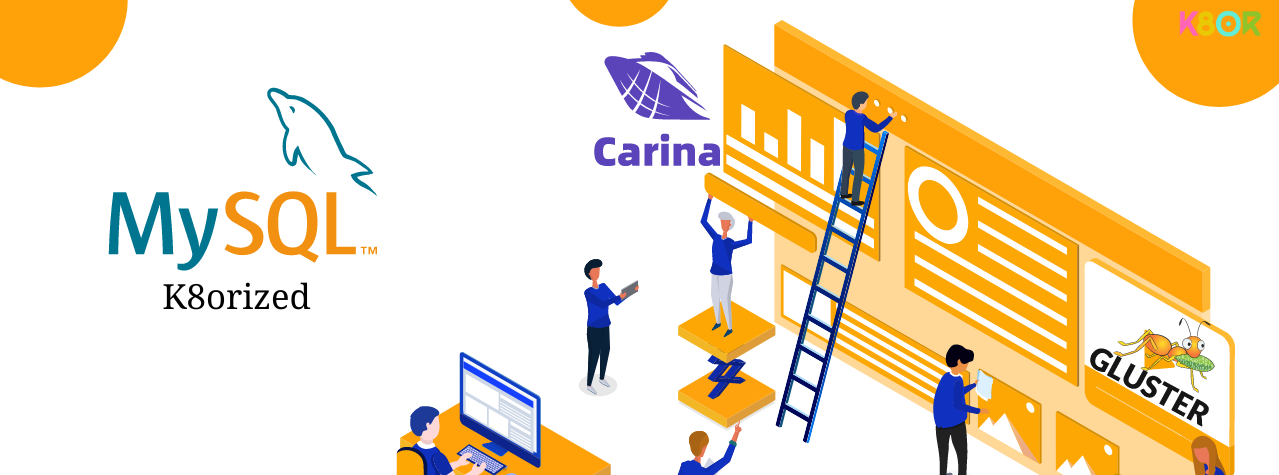
Building upon the foundation laid by Levels 1 and 2, Level 3 k8orization delves deeper, focusing on Application Layer Optimization. This process targets the application itself, residing within the k8orized OS and package layers, further refining and optimizing it for enhanced efficiency, security, and granular user control within Kubernetes deployments.
What is Application Layer k8orization with Granular User Control?
It's the meticulous analysis and transformation of the application, along with the establishment of dedicated user profiles and call tracing mechanisms for enhanced security and operational visibility. This level focuses on multiple key aspects:
1. Optimized Application Files:
-
Redundant Element Removal:Similar to Level 2, unnecessary files, Application configurations, and documentation within the application directory are eliminated, further reducing image size and minimizing potential attack vectors. -
Code Trimming:Unused libraries, dependencies, and functionalities within the application code are identified and removed, leading to a leaner and more efficient codebase.
2. Enhanced Security with Dedicated Users and Call Tracing:
-
Unique Application User:A dedicated user account is created specifically for the application within the k8orized Application image. This user possesses minimal privileges and only has access to resources required for the application's operation. -
Corresponding Application User Profile:A corresponding user profile is established within the host system, mapping all calls made by the application user to the specific application. This enables granular tracing and auditing of application activity. -
System Call Restrictions:The system call restrictions implemented in previous stages are applied rigorously at the application level, granting access only to authorized calls by the dedicated user, further bolstering security. -
Sandboxing (Optional):Depending on the application and required security posture, additional sandboxing measures can be implemented to restrict its access to resources and isolate it from other applications.
3. Comprehensive Logging and Monitoring:
-
Application-Level Logging:Similar to Level 2, comprehensive logging mechanisms are integrated directly into the application code, providing detailed visibility into its internal operations and facilitating troubleshooting. -
Metrics Integration:Additional metrics collection and reporting functionalities can be embedded within the application for enhanced operational monitoring and performance analysis. -
Call Trace Integration:The mapped call trace information can be integrated with application logs and metrics, providing a holistic view of application activity and potential security events.
4. Abstraction Layer with Infrastructure Integration:
This step introduces a C, Python or Go abstraction layer and acting as a bridge between the Application underlying K8s infrastructure. The key purpose of this layer is to enhance security, portability, and extensibility, simplifying integration with various cluster-native tools and services:
-
Universal Compatibility:The abstraction layer decouples the application from the specifics of the underlying Application, enabling seamless deployment across different K8s environments. -
Automated Configuration Management:Imagine your K8s cluster as a complex ecosystem with tools like secret management, DNS configuration, and network connectivity providers. This Application abstraction layer can act as a "smart orchestrator", automatically automatically enabling Application configurations for products, tools, and services. -
Simplified Maintenance and Upgrades:With streamlined configurations managed by the Application abstraction layer, updates and maintenance become easier. -
Improved Operational Efficiency:By automating tedious Application configuration tasks, human intervention is minimized, freeing up your team to focus on other higher-level development and operational activities. -
Think of this Application abstraction layer as a "universal application translator" for your K8s environment. It takes away the burden of intricate Application configurations and interdependencies, leaving you with a secure, flexible, portable, and easily maintainable Application layer for your K8s ecosystem.
5. BOT Integration Layer:
This Application layer incorporates customized code (C, Python, or Go) designed to seamlessly integrate K8s products using BOT Framework to enabling unified communication with other dependent products supporting the application.
-
Unified Communication:Streamlines communication between various K8s products or services within an application. -
Enhanced Functionality:Enables the application to leverage functionalities offered by K8s products. -
Simplified Development:Provides a standardized approach for supporting an application with K8s products ecosystem.
This document presents an example hGraph visualization of the application k8orization process implemented at BOTops company.

The user authorization process requires accessing and verifying credentials across all necessary services: Google, AWS, Jira, Miro, Toggle Tracker, GitHub, and DockerHub.
This sector outlines the creation of manifest files in YAML format for various Kubernetes resources.
-
The first manifest defines a StorageClass, enabling volume creation.
-
The second manifest creates a PersistentVolumeClaim, claiming a volume.
-
The third manifest deploys a service with mounted volumes, exposing both /mnt and /usr directories.
-
The fourth manifest deploys another service with mounted volumes, focusing specifically on volumes within the /usr directory.
Section 3 outlines the pre-deployment steps, including authorizing access to a Jump EC2 instance, establishing a connection to the EKS cluster, switching to the appropriate namespace, and verifying connectivity to the Node Group, ensuring a smooth and secure deployment process.
Section 4 dives into deploying the StorageClass, detailing the steps: uploading the manifest file, establishing the StorageClass itself, and the subsequent automatic volume creation, streamlining storage provisioning for your application.
Section 5 outlines the deployment of the PersistentVolumeClaim (PVC), guiding you through uploading the manifest file and subsequent PVC creation. This empowers your application to request and utilize persistent storage seamlessly.
Section 6 delves into the deployment process, guiding you through applying the deployment manifest, creating the deployment resource, spawning a replica set, and finally launching individual pods, orchestrating the entire application rollout in a step-by-step manner.
Section 7 tackles automated pod storage attachment, demonstrating how to specify StorageClass and PersistentVolumeClaim information within your manifest file. This ensures seamless storage provisioning for your deployed pods.
Section 8 dives into content migration, guiding you through executing the created pod, copying all files from /usr to the mounted /mnt directory, and then verifying memory usage remains consistent across both directories. This final step confirms successful migration and data persistence within the mounted volume.
Sector 9 streamlines resource removal with the deployment manifest deletion, triggering a cascading process that automatically deletes the associated pods, replica set, and ultimately the deployment itself.
Section 10 showcases deployment with a dedicated volume for the /usr directory. It walks you through applying a deployment manifest, spawning a replica set, and launching individual pods, all configured with the mounted volume.
Sector 11 focuses on automated storage provisioning for deployed pods. This triggers the automatic attachment of the storage resources to the created pod.
This section describes the installation process for the Streamlit application. It includes the steps involved in setting up the Streamlit environment and any required dependencies. Additionally, it highlights the generation of a log file to track the installation process and potential issues.
Why Do We Do It?
Standard application deployments lack dedicated user accounts and granular call tracing capabilities. This leads to security vulnerabilities and difficulty in identifying the source of application issues. Level 3 k8orization with granular user control addresses these issues by:
-
Further Enhanced Security:Dedicated users with minimal privileges and strict access control significantly reduce the attack surface and improve overall security posture. -
Simplified Troubleshooting:Call trace mapping directly to the application user allows for quick identification and resolution of application problems. -
Improved Operational Visibility:Detailed logging, metrics, and call trace information provide comprehensive insights into application behavior and performance.
How is it Useful?
k8orized application layers with granular user control offer several benefits for your K8s deployments:
-
Faster Deployments and Updates:Even smaller images and optimized performance minimize deployment downtime and accelerate updates for your applications. -
Enhanced Scalability and Density:Smaller footprint and optimized resource utilization allow for denser deployments within your cluster. -
Simplified Security Management:Consistent application configurations, dedicated users, and centralized logging streamline security updates and vulnerability management. -
Improved Operational Visibility:Granular application-level logging, metrics, and call tracing facilitate quicker troubleshooting, proactive performance optimization, and enhanced audit capabilities.
Differences from Standard Images:
k8orized application layers with granular user control differentiate themselves from standard Docker images in several ways:
-
Deep-Level Optimization:They go beyond package optimization to analyze and trim the application code itself and implement dedicated user accounts and call tracing mechanisms, leading to a highly efficient, secure, and transparent deployment. -
Enhanced Security Control:Granular access control, dedicated users, and call tracing provide advanced security measures and audit capabilities compared to standard deployments. -
Application-Centric Design:They are explicitly tailored for the specific needs, security requirements, and operational visibility of your application within K8s.
Level 3 k8orization with granular user control takes your k8orized Application images to the final level of optimization by refining the application layer and implementing user-centric security and call tracing mechanisms. By removing redundant elements, establishing dedicated users with precise access control, and integrating comprehensive logging and call tracing, this approach ensures the leanest, most secure, and transparent deployments within your application.
Looking to expand your k8or knowledge?
k8or is easier to use with a basic understanding of Kubernetes principles and core concepts. Learn and apply fundamental k8or practices to run your application in k8or.

Explore BLOCK framework, k8orization, custom images, deployments, and more


